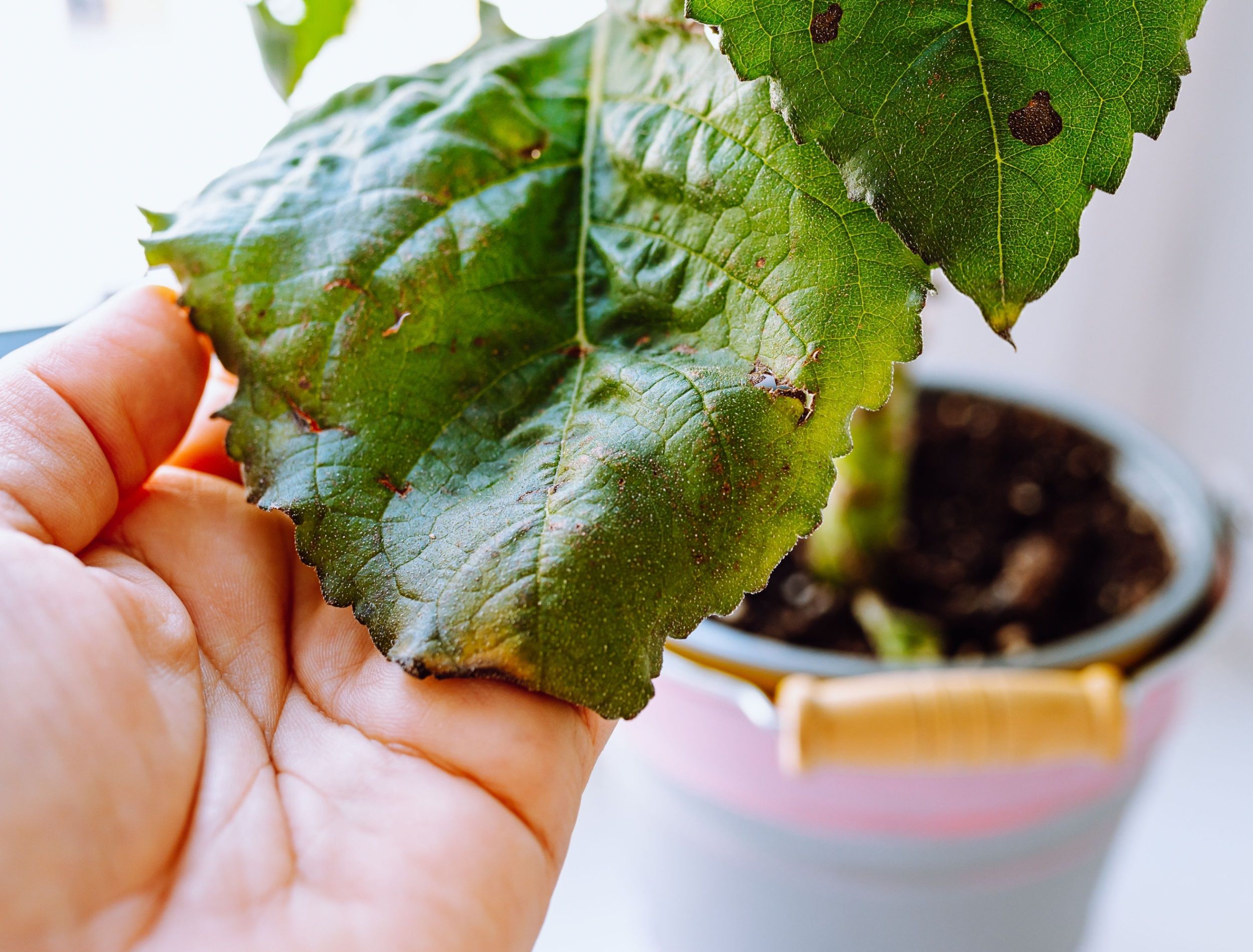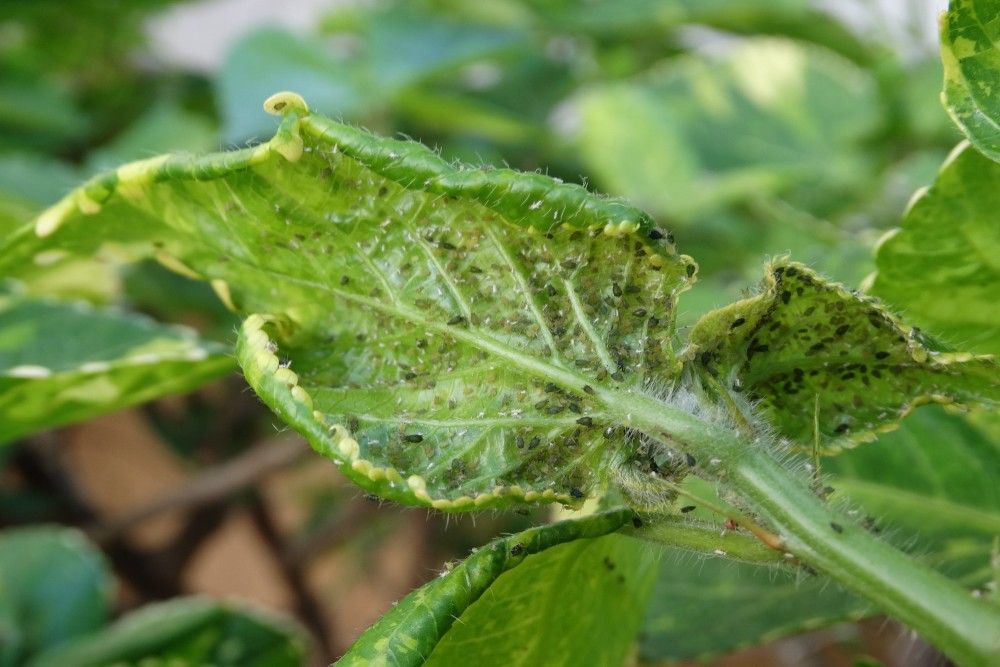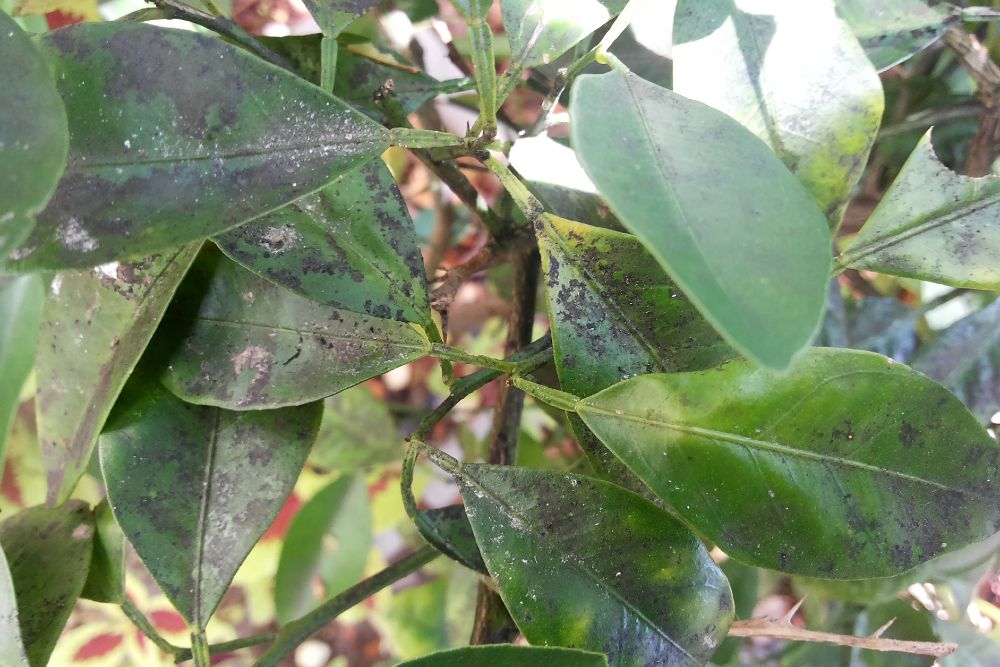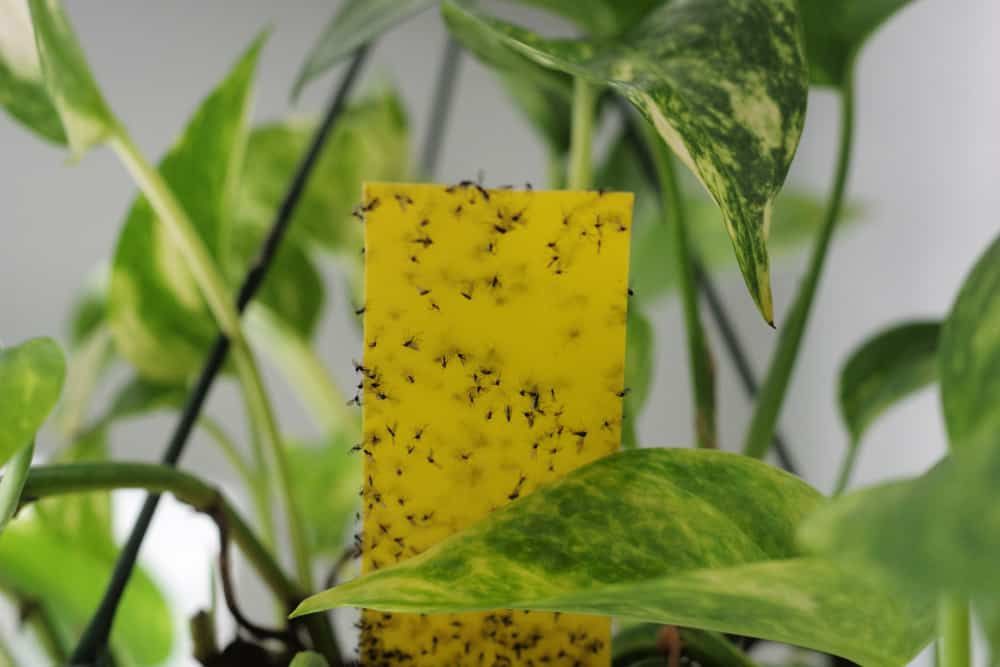Houseplants may have extra protection from the outdoor elements, they are not, however, immune to pests! Houseplant pests come from differing sources, like when an outdoor plant moves indoors, or when a houseplant is new from the nursery. The best protection against common houseplant pests is a healthy and well-cared-for plant, but even then sometimes these little critters find a home in your plant!
Learning the signs to look out for is a great way to stay ahead of any severe plant damage. Check out these common signs that communicate the presence of houseplant pests and stop them in their tracks!
1. Yellowing/Mishapen Leaves
Image credits: Plant Pests and Diseases via Creative Commons
Yellowing and misshapen leaves is a sign that pests may be sucking sap off the leaf. Pests such as aphids, mealybugs, and scales are some of the main culprits to this problem. Not only is it unsightly, but if these pests continue feeding, further damage and disease will follow.
To fix this problem, remove aphids and mealybugs with a cotton swab dipped in rubbing alcohol or an insecticidal spray. Scales are tougher to wipe off and so, use a fingernail to remove these. Continue treatment multiple times, until no further pests are present. If the infestation is too heavy, you can try to prune some stems and save what you can. In the worst case you may need to discard the plant entirely to protect any other houseplants nearby.
2. Sooty Mold Fungi
Image Credits: Scot Nelson via Flickr
Do you notice a black substance forming on the leaves of your houseplant? This substance is sooty mold fungi and it develops from the sugary secretions left behind by sap-sucking pests like aphids and mealybugs. Though not particularly damaging to the plant, the black soot-like substance can get thick enough to impair light from reaching the plant. Without light, the plant's health will decline.
This fungus is a result of houseplant pests and so, eradicate these pests to prevent further sooty mold fungi from producing. Remove pests with a cotton swab dipped in rubbing alcohol or insecticidal spray. If scales are the culprit, remove them with a fingernail. For the sooty mold, simply wipe any leaves that have the fungi present with a soap and water mixture.
Continue until no further pests or fungi are present.
3. Faded Leaf Appearance
Image credits: Sozina Kseniia via Shutterstock
Spider mites are another common houseplant pest that sucks sap off the leaves. These little critters cause a speckling of damage on the upper side of the leaf giving the plant an overall faded appearance. You will also see small webs with heavier infestations. The overall drab look is a precursor to yellowing and further damage like sooty mold fungi.
To remedy this problem, spray the plant heavily and forcibly with water or insecticidal spray. This will help to dislodge the webs of the spider mites. Continue treatment for several weeks until no further pests are present.
Pro Tip: Thrips may also cause this faded appearance but are less common. The remedy, however, is the same as for spider mites.
4. Flies Around Houseplant Soil
Image credits: Pixelbender36
Do you see little flies near the soil of your houseplant? Adult fungus gnats are not particularly harmful to your plant, but they are an indicator that the harmful gnat larvae are present. Fungus gnat larvae thrive in overly moist soil and feed on organic material within, some even feeding on the roots of the plant. This feeding pattern prevents healthy growth and eventual loss of leaves.
Since fungus gnat larvae need moist soil to survive, overwatering is something to be cautious about. To eradicate these houseplant pests, allow the plant (if it can tolerate it) to dry out between watering and remove any drainage trays that have standing water under the pot.
5. Stunted Growth
Image credits: Okrasiuk via Shutterstock
If your previously healthy and thriving plant now appears to have slow growth or deformations, this may be a sign of pest infestation. When pests like mealybugs, aphids, or whiteflies are present, they feed on the sap on the leaves, and sometimes the roots as well. This causes a reduction in growth and new buds may become deformed. If left unchecked, this can result in the plants' death.
To remedy the stunted growth, look for pests and other common plant problems and fix it immediately! For all three common pests (aphids, mealybugs, and whiteflies) spray a soapy water solution on both the top and undersides of the leaves. Continue this treatment until bugs no longer appear.
Bug Out!
Though not an exhaustive list, these five common signs help to determine pest infestations on your houseplant. From yellowing leaves to little black flies, treating these pests early is key to keeping life in your plant. Simple solutions like soapy water sprays make managing these common critters a breeze.
Do you or someone you know experience these pests in the home? Share these tips with your plant-loving friends to keep the pests out!






